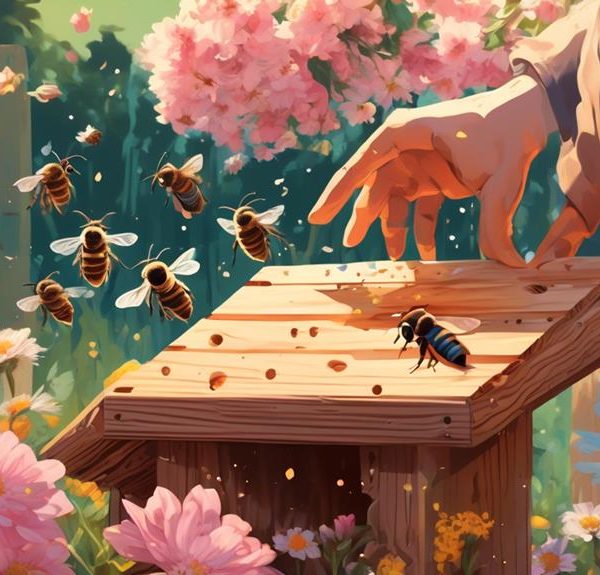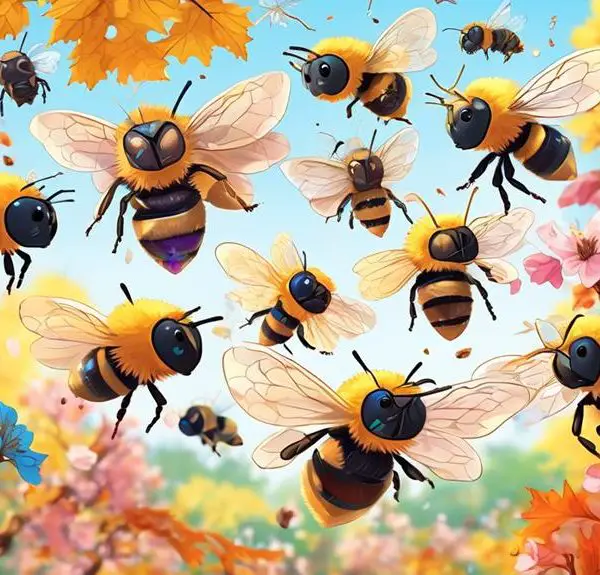Uncover the intriguing world of mason and honey bees, and discover if they can coexist in the same habitat or garden.
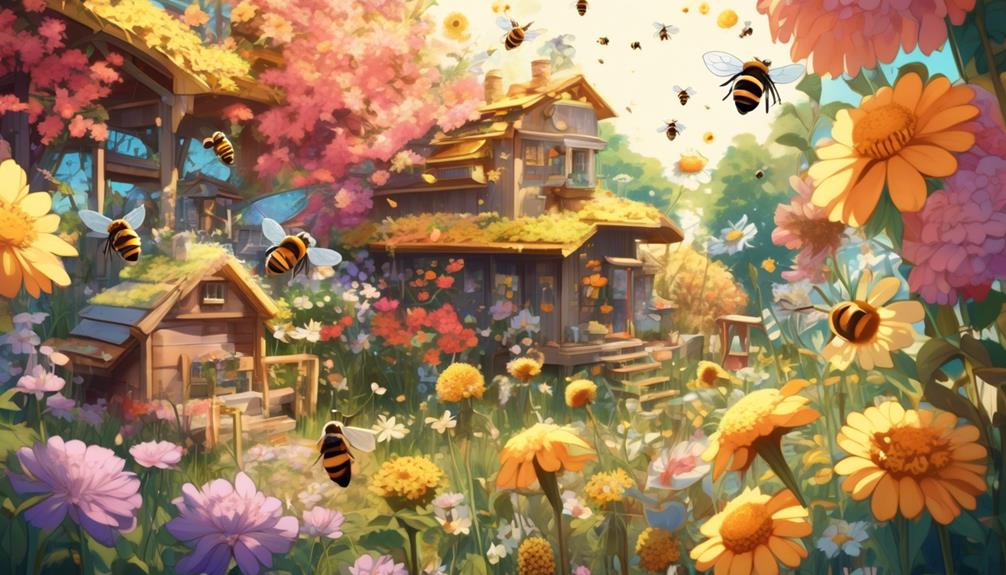
Can Mason Bees and Honey Bees Coexist?
Just like the fabled Montagues and Capulets from Shakespeare's Romeo and Juliet, mason bees and honey bees have long been perceived as two species that just can't seem to get along.
Yet, you're faced with a pressing question: can these two species, each with their unique characteristics and needs, coexist peacefully in the same habitat or garden?
While honey bees are often hailed as the champions of pollination, mason bees play a surprisingly crucial role in our ecosystems too.
It's not just about who does the job better, but more about if these two important pollinators can share the same space without causing harm to each other.
This question, seemingly simple, has profound implications for our understanding of biodiversity and could redefine how we approach bee conservation.
So, are you ready to dive into the buzz?
Key Takeaways
- Mason bees and honey bees have different nesting habits and behaviors, which help reduce competition for resources and territorial conflicts.
- Both mason bees and honey bees are crucial pollinators, but they have unique roles in maintaining ecological balance due to their variations in pollination methods.
- Mason bees are exceptional pollinators, promoting cross-pollination and genetic diversity among plants.
- Honey bees contribute to ecosystems by producing honey and efficiently pollinating various plants, aiding in crop yield.
Understanding Mason Bees

To truly grasp the nature of the coexistence between mason bees and honey bees, you need to first understand the unique biological and behavioral characteristics of mason bees. Unlike their honey bee counterparts, mason bees are solitary creatures. They don't live in colonies, nor do they produce honey. They're named for their tendency to use mud or 'masonry' in constructing their nests, which are typically built in pre-existing holes.
Their solitary nature means they don't have a queen or worker bees, and each female is fertile, capable of mating and laying eggs. This, in turn, impacts their interaction with other bee species. They're not aggressive, as they don't have a colony or a queen to defend. This makes them less prone to sting unless directly threatened.
Mason bees are also exceptional pollinators. They're known as 'belly floppers' because they dive belly-first into flowers, covering themselves in pollen. This behavior allows for more efficient and effective pollination than honey bees, who carry pollen on their hind legs.
Understanding these distinct characteristics is key to comprehending how mason bees interact and coexist with honey bees.
Insights Into Honey Bees

While understanding the solitary and industrious nature of mason bees is crucial, it's equally important to get a grasp on honey bees, their social structures, behaviors, and roles in the ecosystem. Unlike mason bees, honey bees are eusocial insects, meaning they live in large, complex colonies with a distinct social structure.
Consider the following table for a detailed comparison:
Aspect | Honey Bees |
|---|---|
Social Structure | Eusocial, with complex colonies |
Behavior | Cooperative and communicative |
Role in Ecosystem | Pollinators and honey producers |
Hive Size | Up to 60,000 bees |
Lifespan | Varies; queens can live up to 5 years |
You'll find that honey bees have a cooperative and communicative behavior, where they exchange information about food sources through their famous 'waggle dance'. As pollinators, they're vital to the ecosystem, and their honey production is a valuable economic resource. Their hives can house up to 60,000 bees, a stark contrast to the solitary mason bee. The lifespan of honey bees varies, with queens living up to 5 years, significantly longer than worker bees. These insights into honey bees' life are key to understanding their coexistence with mason bees.
Comparing Mason and Honey Bees
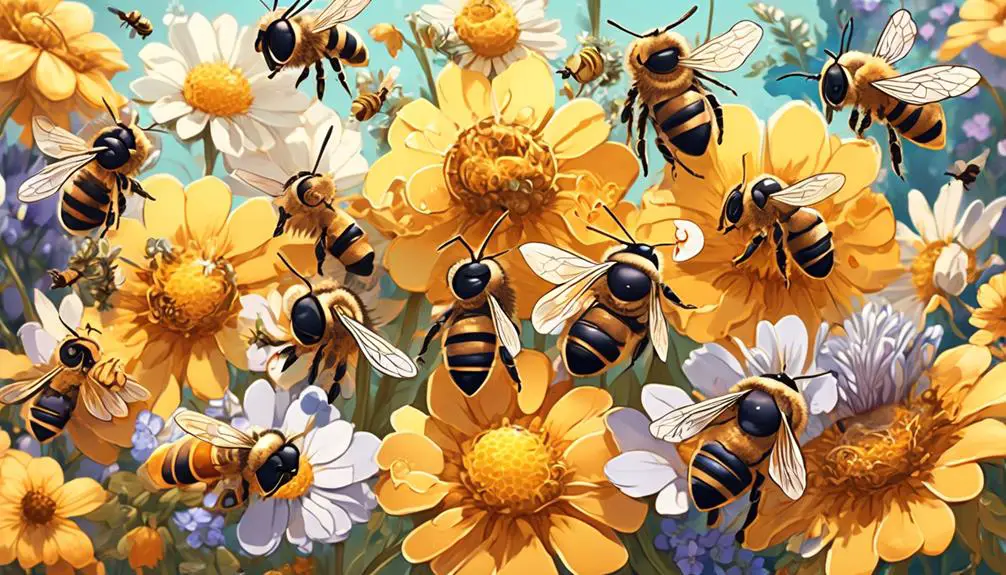
In comparing mason and honey bees, you'll find stark differences and surprising similarities that shed light on their unique roles and behaviors in the ecosystem.
Mason bees are solitary creatures. They don't form colonies like honey bees, instead nesting in individual cavities where they lay eggs and provide food for their offspring. Mason bees also lack the complex social structure of honey bees, which possess a queen, drones, and worker bees.
Honey bees, on the other hand, are known for their honey production. They gather nectar and pollen from flowers, which they store and transform into honey. Mason bees don't produce honey, but they're exceptional pollinators, often more efficient than honey bees. They carry pollen on their belly, which easily rubs off on flowers, facilitating cross-pollination.
Despite these differences, both species share a common trait: they're vital to our ecosystem. Honey bees contribute to biodiversity by producing honey and beeswax, while mason bees help maintain plant diversity through their pollination activities. Both species are crucial for maintaining balanced ecosystems and ensuring the survival of various plants and crops.
Coexistence in the Bee World
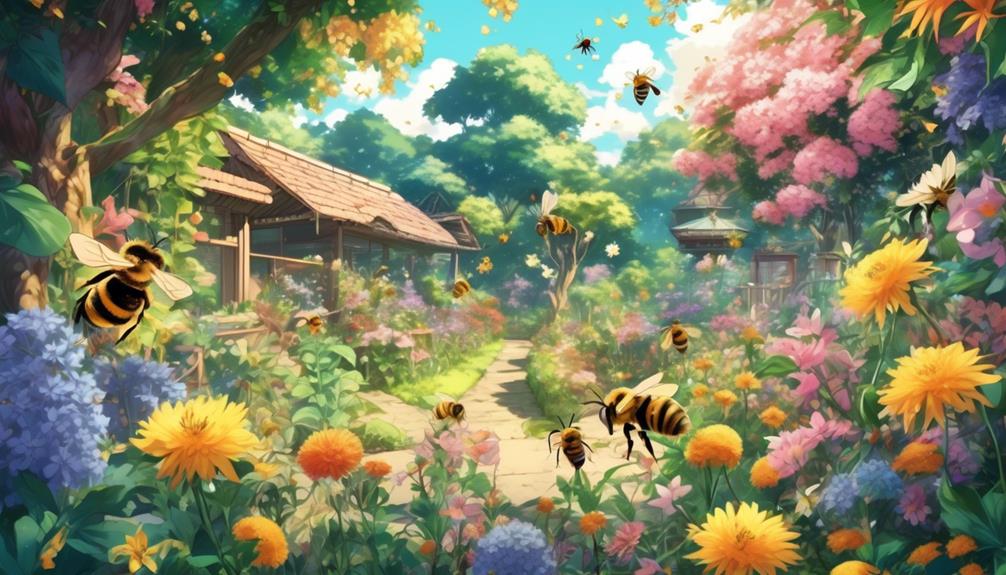
You might wonder how mason bees and honey bees manage to coexist, given their stark differences in behavior and function within the ecosystem. A detailed look into their life cycles and habitats reveals that these species have adapted to harmoniously share resources.
Primarily, mason bees and honey bees differ in their periods of activity. Mason bees are solitary, springtime creatures, who've completed their lifecycle by early summer. Contrarily, honey bees are social insects that remain active throughout the warmer months. This staggered activity reduces competition for nectar and pollen, allowing both species to thrive simultaneously.
Secondly, their nesting preferences also contribute to peaceful coexistence. Mason bees opt for tiny cavities or pre-existing holes in wood to lay their eggs, while honey bees build complex, wax-coated hives. This distinct divergence in nesting habits eliminates territorial conflicts.
Lastly, their pollination methods differ. Mason bees exhibit sloppy pollination, inadvertently spreading more pollen, thereby assisting in cross-pollination. Honey bees, on the other hand, are efficient gatherers, collecting most pollen on their bodies, which results in less cross-pollination. These variations in pollination ensure that each species plays a unique, vital role in maintaining ecological balance.
Impact on the Ecosystem
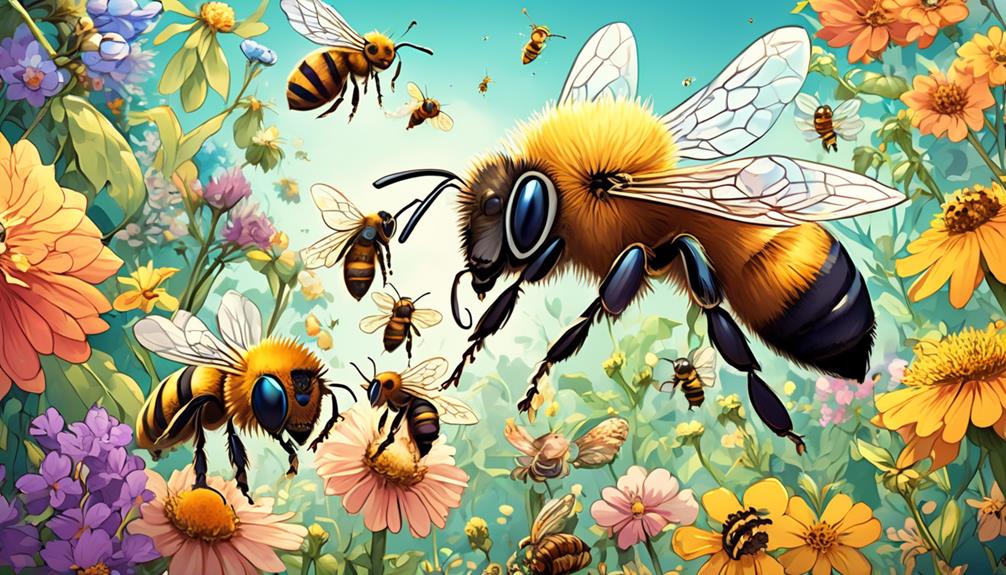
Both mason bees and honey bees significantly contribute to the ecosystem, each with unique methods and mechanisms that bolster plant populations and biodiversity. Your understanding of these tiny creatures' ecosystem role is crucial to appreciating their coexistence.
Mason bees, as solitary insects, don't produce honey but are superior pollinators. Their haphazard flight patterns and the fact that they carry pollen on their belly allow for more effective pollen transfer, encouraging cross-pollination and genetic diversity among plants. This biodiversity strengthens ecosystems, making them more resilient to changes and threats.
Honey bees, on the other hand, are social insects that contribute to ecosystems by producing honey and pollinating a variety of plants, particularly single-crop fields. They employ efficient, targeted flight patterns which, while less effective for cross-pollination, significantly aid in crop yield.
Therefore, the impact of mason and honey bees on the ecosystem is substantial. Your awareness of their roles can help protect and foster these important pollinators, ensuring the continued health and diversity of our environment.
Conclusion
In conclusion, you've learned that mason bees and honey bees can indeed coexist. Their unique behaviors, needs, and contributions to the ecosystem enable them to share environments harmoniously.
By understanding their differences and similarities, we're able to appreciate their individual impacts on our world. This coexistence isn't just possible, it's vital.
Each species plays a crucial role in biodiversity, pollination, and the overall health of our planet's ecosystems.

